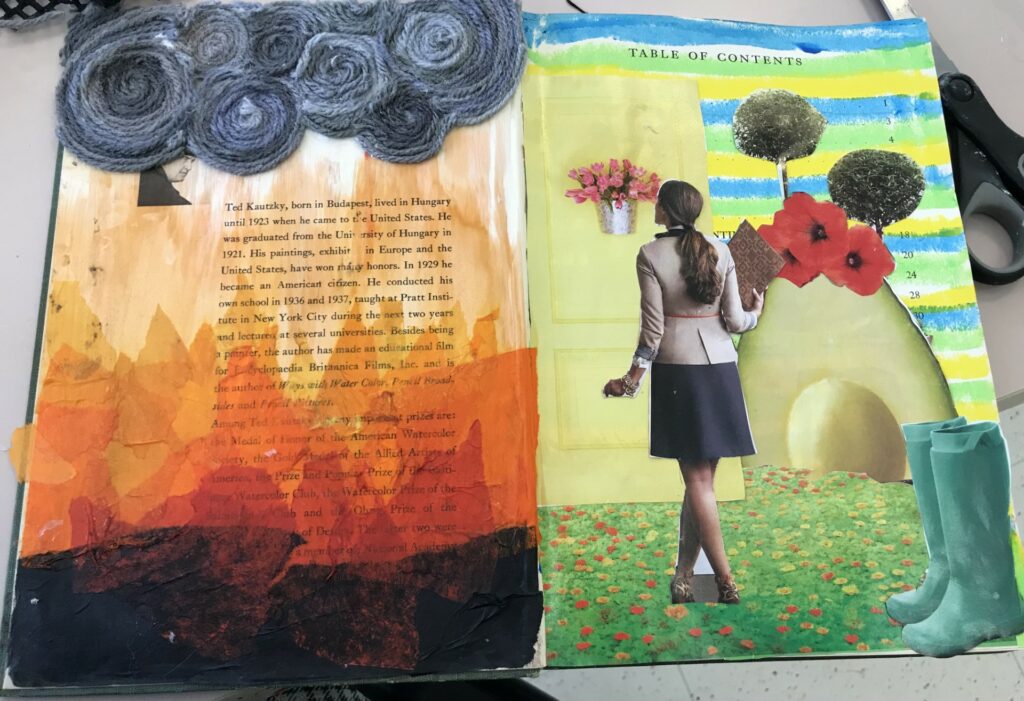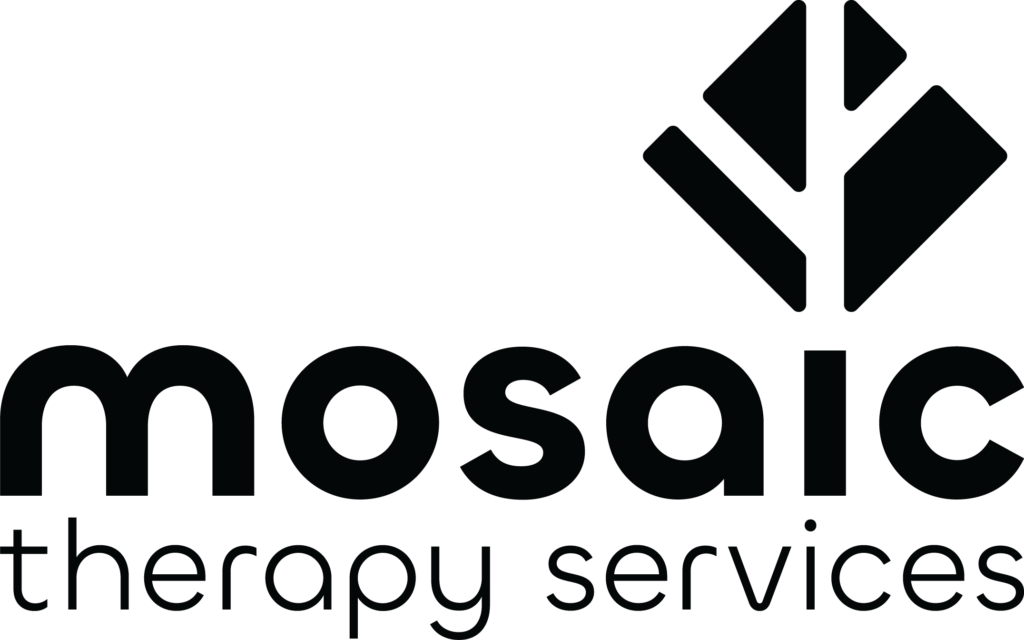By Deanna Nash
What exactly is an Altered Book, anyway?
Altered books are a type of mixed-media project that transforms old, unloved books into unique works of art. As a type of narrative art therapy, they can provide a safe container to process emotions with the added benefit that they can be effortlessly secured once complete. Often, altered books are used to explore a particular theme or question, though they can just as easily serve as a personal art journal. Though the concept of turning an outdated book into art is not new, it has recently become increasingly popular due to a renewed interest in personal journaling. Regardless of how they are implemented, altered books are an infinitely customizable DIY project that can quickly become a new passion.
Besides being a great way to repurpose antiquated texts, altered books offer the individual an excellent springboard for creative experimentation. The books to be altered can be chosen at random, or carefully selected for a specific subject matter that inspires. Just about any art material can be used in the altering: paint, pencil, wax, thread, fabric, photos, clay, ribbons, collage- the list goes on and on. Truly, there are as many possibilities as there are altered books!
Sure, but how is this therapeutic?
An extension of some of the basic properties of art therapy itself, altered bookmaking can often provide a voice to emotions or thoughts that are difficult to express in words. Perhaps because of this, it’s a medium that’s used across a wide range of demographic groups. There are numerous articles relating the positive experience of altered book-making when working with adolescents, members of the armed forces, and even individuals with Alzheimer’s or other cognitive difficulties. This is sometimes specifically attributed to the fact that when creating an altered book, one need not begin with a blank canvas. Drawing inspiration from the chosen book is often an important part of the art-making process.
Working within the context of the altered book also provides the backbone of an experience reminiscent of narrative storytelling. This helps create a natural connection to events in a person’s life and creates opportunities for meaning-making. Meaning-making can be especially helpful for individuals processing a traumatic event or difficult transition. If an individual has chosen to describe events or issues they are facing in their own life within their altered book, they can then explore these concerns and even consider potential outcomes through the art-making process. Should an individual choose to share their altered book with someone, it may be able to provide more information about their journey than they’d be comfortable sharing in words. It’s also important to note that because of their experimental nature, altered books are a very accessible medium for individuals self-conscious of their own art-making abilities
Aren’t you destroying books, then?
Many altered book artists are familiar with the concerns and questions that come from people who believe that books are sacred and should never be defaced. If you feel similarly, it is important to note:
- Most altered book artists work in old books. That’s not “old” as in museum-quality, but rather back-of-the-used-book-store, marked-down-to-nothing, nobody-has-any-use-for-them anymore old. They work in books that, if not purchased for art, will be shredded for pulp.
- Many artists check the books they buy against vintage book listings, to ensure they are not about to cut into a book that still has value. While tedious, this is a necessary step so that a rare or important text is not compromised.
- Some artists have a personal list of books they absolutely would not use for altering, no matter how old or inexpensive it might be. Some (but not all) would refrain from working in the Bible, Quran, or other holy books.
- While some artists’ work may be politically motivated, the process of physically altering a book is not meant as a political act or protest against the subject matter. Again, this is a way to recycle unwanted books not destroying books for the sake of censorship.
Generally, altered book artists respect books in a way that is second only to librarians. Never fear, they are not defacing books that anyone wants or needs. Instead, they are resurrecting old, unloved books, and turning them into art!
What kind of book can be altered?
Now, not any and every book is destined for a future as an altered book. The only real requirement in the world of altered books is that the books themselves are hard-covered with a sewn binding. This is because an important part of the prep process involves thinning out unnecessary pages to accommodate pages that may buckle or warp due to art making. Trying to remove pages of a book that have a glued binding will often result in the binding coming apart altogether. The one notable exception to this rule is children’s board books, which can often create a very interesting end product.
If you’re interested in making your own, a great place to start is your very own bookshelves! Usually, older hardcover books from the mid-20th century have sewn bindings. Generally, books that are 1-2” in thickness are a good size for beginners to experiment with. Some people have a preference for using old textbooks, which can be especially useful if you have an expressed interest in a specific subject matter. Likewise, older art books or illustrated storybooks can provide a great deal of inspiration. If you only own books too previous to alter, consider instead a visit to a thrift store. While it may take some time to shift through the available texts, this is a great way to source suitable books that are otherwise likely to be thrown away.
The Process
The basic process for preparing a book for alterations is simple, though sometimes tedious. As mentioned earlier, one of the first steps in the altered book process is removing any unwanted pages. At the risk of becoming a hoarder, it can be quite helpful to hold on to these pages for later use. The amount of pages to be removed depends on the individual book’s thickness. Unless you are planning to create a compartment in the back of your book (a very possible endeavor), you likely would not want to choose a book that is more than 1”-2” thick. A book that’s too thick can lead to a monotonous process of removing or gluing pages.
Once an adequate amount of pages have been removed, the remaining pages are glued together into separate chunks creating what are known as “spreads.” These spreads are the foundation for later art-making. By gluing together several pages (specific amounts vary from book to book) the spreads become sturdy and better equipped to handle a wide variety of mediums. There are a range of different materials that can be used to glue pages together, from the humble glue stick to more prestigious, archival-quality PVA glues. Glue selection generally comes down to an artist’s personal preference and resources.
Once a book has been adequately prepped, the art-making well and truly begins. Almost any type of art material can be utilized within an altered book as long as the necessary prep work has been done. While there are many techniques associated specifically with altered books, the beauty of the medium is the opportunity for experimentation it creates. Many see the experience of altering a book as creatively freeing, and find that the only limitation is their own imagination.


